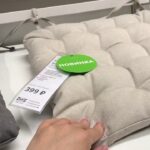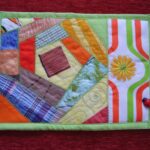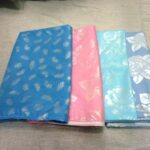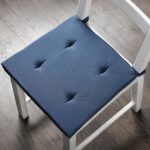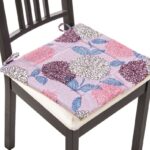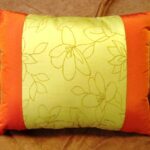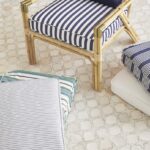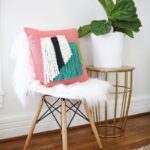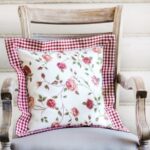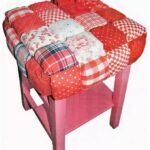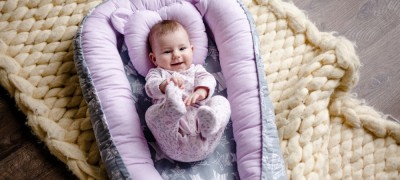DIY chair cushions
The striving for beauty is inherent in everyone from the very beginning. Of course, most people are not artists or poets, however, any thing with which there is close contact, they try to make it more attractive, endow it with individuality. This is probably why many housewives are engaged in embroidery, choose knitting or sewing pillows on chairs as their leisure time, subconsciously bringing a piece of harmony into the world.

- Why do you need such a pillow?
- Types and varieties
- How to sew yourself
- Style and design: what to choose?
- Picking up material
- Required tools
- Getting started sewing
- What is the best way to decorate?
- Methods for securing the pillow
- Updating an old pillow: nuances
- Care rules
- Video: how to sew a pillow on a chair
- Chair pillow design ideas - 50 photos
Why do you need such a pillow?
There may be several reasons. First of all, it is aesthetic, a desire to embellish a room, create a special atmosphere or color in it. In addition, such an element can be a good match for the design style. In any case, a hand-sewn pillow will have to be in place in any home.
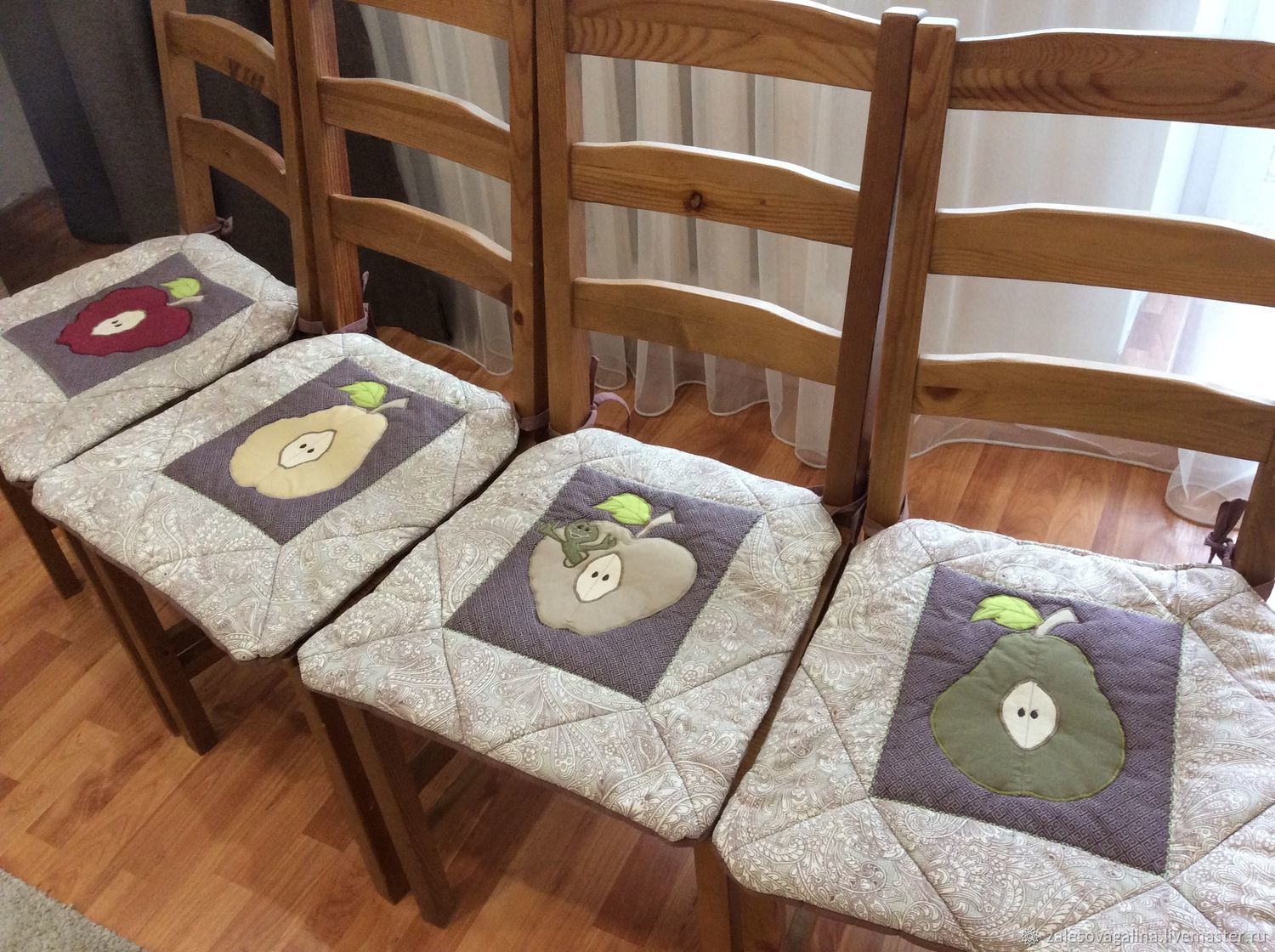
On the other hand, the desire to equip your own life, to make it more comfortable, can be dictated by purely practical considerations. So, in the presence of chairs with a hard seat or old ones that have lost their original elasticity, a homemade pillow will come in handy. In addition, its use makes sense from the point of view of preserving the original upholstery of upholstered furniture.

Types and varieties
Except for pillows designed exclusively for sleeping or resting, the rest of the accessories are classified according to the type of performance and the nature of use. These can be both purely functional products, in which the main advantage will be practicality and durability, and decorative. In the latter case, the need for such interior elements is determined by categories such as style and design.

From the point of view of execution, pillows may differ in shape (round or square), in the way of fastening (free placement, on elastic bands or hinges), as well as in style:
- Made from a single piece of fabric.
- Knitted.
- Made in the Biscuit technique.
- Quilted or tailored pillowcases.
- Bicolor: bottom one color and top another.
- Thick flat or soft bulky.
How to sew yourself
First of all, you should decide on the purpose of the future product. If this is a decorative option, you can play with the fabric and color, but if the pillow is supposed to be used as a seat, the practicality and properties of the filler will be at the forefront. In addition, do not forget that the seat of the chair and stool differ in shape and design, which is important to consider when choosing a mounting method.

Style and design: what to choose?
It is necessary to strive to ensure that the pillow harmoniously fits into the existing style, complementing and expanding it. Although, no one forbids going from the opposite, using the product to accentuate attention or create contrast. If the interior already has similar elements, the pillow needs to be sewn in the same way.

As for the color performance, here it is worth starting from specific conditions. Somewhere the only correct solution would be to choose a plain fabric, in some cases it would be appropriate to deviate from the strict style (patchwork, stigis), and sometimes a pillow made of the same type of elements, for example, pom-poms, may be the best option.

Note! In general, you can focus on neutral, calm colors - they will be appropriate in any interior. If you do not want to experiment, it is recommended to stay on a fabric in a cage or polka dots.

Picking up material
Again, the material should be chosen based on the purpose of the accessory. Most often they rely on criteria such as wear resistance, ease of maintenance, durability. And this applies to both the cover and the filler. The influence of environmental conditions will also be an important factor.
Choice of fabric
If the pillow is supposed to be used as a seat, then you need to pay attention to durable, wear-resistant fabrics such as gabardine, reps or teak. In general, it is better to focus on natural materials:
- Cotton. Hypoallergenic, practical fabric. It is easy to process and does not lose its properties after washing.
- Linen. It keeps its shape well, is able to "breathe", and absorbs moisture well. Despite its rough texture, it is perfect for kitchen pillows.
- Denim (jeans). The main advantage is practicality and unpretentiousness. The finished products have an aesthetic attractive appearance.
Additional Information! In certain cases, you can use other materials that are not so common, but nevertheless perfectly suited for such a task: fleece, microfiber, flock, artificial fur and even carpet!
Filler selection
As for the filler, special requirements are imposed on it:
- Origin: natural or artificial.
- Elasticity.
- Durability.
- Resistance to deformation over time.

Of course, it is preferable to choose natural material. Among the most common fillers are feather or fluff, sawdust (fine shavings), sheep's wool, horsehair and even buckwheat husks. However, it should be borne in mind that they often cause allergic reactions and are not suitable for outdoor use.

If the choice falls on synthetic fillers, the following are most often used here: polyurethane foam, polystyrene, synthetic winterizer, holofiber. It is worth using foam rubber only as a last resort, since over time it completely deteriorates. The advantages of the materials mentioned are durability and outdoor use.
Note! By and large, you can stuff a pillow with anything. Even old sweaters or jeans will do.
Required tools
To make a pillow you will need:
- Threads. Matched to the tone of the fabric.
- A set of needles.
- Scissors.
- Roulette or tailor's meter.
- Chalk, pencil.
- Sewing machine.
- Jewelry: buttons, ribbons, bows, fringes.
- Pins, stationery clips.

Getting started sewing
First of all, you need to measure the surface of the chair or stool. Then it is advisable to make a pattern according to its shape. To do this, it is enough to trace the contours of the seat with chalk or a pencil - a piece of cardboard or, in extreme cases, a newspaper sheet will do. It should be borne in mind that the thickness of the pillow will require an increase in size. Usually, an allowance of 15-20 mm is given. Only then can you start sewing.

Since all such products are sewn according to the same principle, the following is a typical sequence of actions:
- Getting the original blanks. According to the patterns made in advance, it is necessary to cut out two identical pieces of fabric. Before cutting, make sure that the pattern includes all possible tolerances.
- Along the seam line, the edging cord is pinned (with pins) and sewn on a typewriter.
- Short ribbons are sewn in the right places (usually at the corners). Subsequently, they will play the role of strings.
- Connect the front (top) and back parts with pins. Determine that part of the contour that will adjoin the back. Sew 3-4 cm from each edge. A zipper is sewn into the resulting opening.
- The rest of the sides are sewn. An important point here is that you need to process as close to the edge as possible.
- After that, the resulting shell must be turned out and, through the gap (where the lightning is), insert the filler. In some cases, it is sewn additionally to avoid the formation of lumps and dumping.

What is the best way to decorate?
A common way to decorate a finished pillow is to add braid or fringe. To do this, you need to sew a piping around the perimeter. In addition, you can also decorate the ribbons with which the product is attached to the chair frame. Also an interesting solution is decorating with the addition of a cord or frills.

The use of buttons is considered a special decoration option. This method is considered separately because it is combined to ensure an even distribution of the filler within the pillow. Usually, an equal number of buttons are taken and sewn to the surface on both sides at equal intervals. In this case, you should tighten the thread well so that a characteristic depression is formed.
Important! When decorating, it is not recommended to use bows, ruffles, rhinestones and other overhead elements!
Methods for securing the pillow
In the simplest case, they dispense with fasteners altogether, simply placing the pillow on the seat. However, this option has a number of disadvantages, so it is relatively rare. The following methods are usually chosen:
- With elastic bands in the corners. Suitable for square chairs and stools.
- Elastic around the perimeter. For a round seat.
- Strings. There may be options here: tie it to each leg separately, or, putting it under the seat, pull all the ties in one knot.
- Velcro.

Updating an old pillow: nuances
Over time, even the most durable and high-quality pillow becomes unusable and requires replacement. Most often, this can be determined by the following signs:
- Resistant surface deformation.
- Uneven distribution of filler.
- The appearance of an unpleasant odor.

In this case, you will need to wash both the cover and the filler. Then everything will have to be thoroughly dried. It is better to dry the synthetic filler on a flat surface, spread evenly over the entire area. After that, with simple, pulling movements, you need to fluff the material. In this way, it is possible to restore holofiber, synthetic winterizer or synthetic fluff.
Important! Don't try to update your pillow with natural filler like buckwheat husk or sawdust!
Care rules
Usually, only in rare cases is it allowed to care for the pillow completely as it is. For the most part, you need to separately wash the pillowcase and clean the filler. So, latex, holofiber and synthetic fluff are machine washable at low temperatures. While feather and natural fluff should be taken to dry cleaning or, in extreme cases, soaked for a couple of hours in soapy water.
As for the cover, it should be washed, based on the recommendations for caring for the type of fabric from which it was made.
Important! Do not use chlorine-based care products.
Thus, in order to embellish a house or apartment, there is no need to turn it into a museum. It is enough just to leave a piece of warmth and comfort there. And it doesn't have to be something out of hand. Even a simple pillow, sewn on a kitchen chair with your own hands, will bring a special charm and flavor to a house where you just have a good time.
Video: how to sew a pillow on a chair



